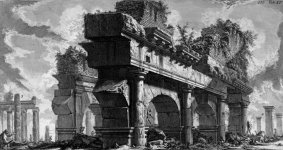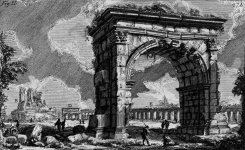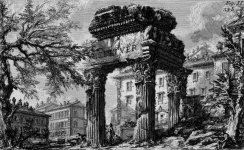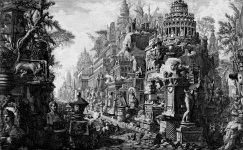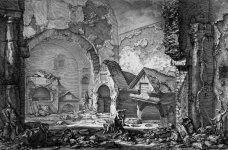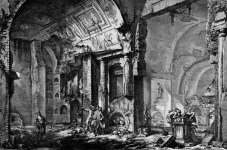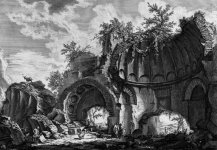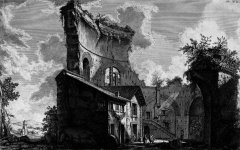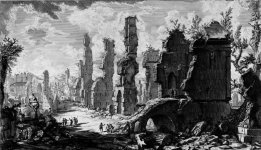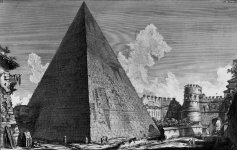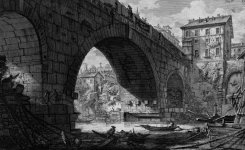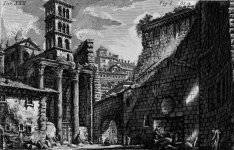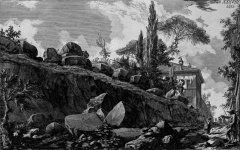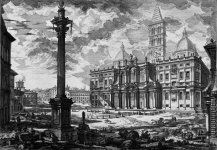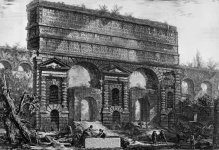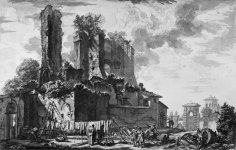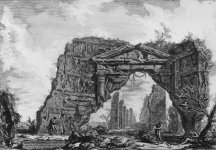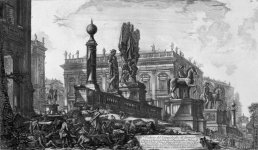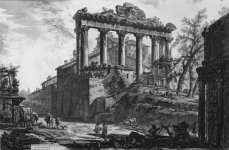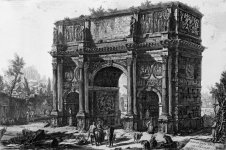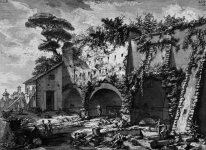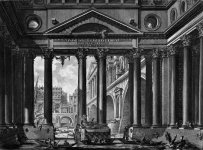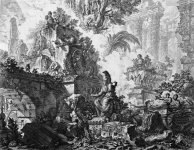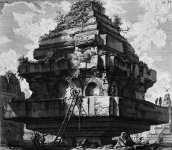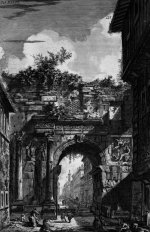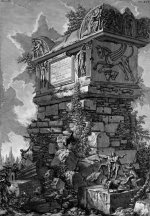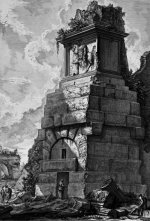Giovanni Battista Piranesi (4 October 1720 – 9 November 1778) was an Italian artist famous for his etchings of Rome and of fictitious and atmospheric "prisons" (Le Carceri d'Invenzione). He was a so called Cappricio artist.
In other words, contemporary interpretation of his creations is that it was a fantasy of the author. There is no historical evidence that Capriccio artists were making stuff up. To me, such an interpretation appears to be a very convenient way to explain the inconvenient truth.
There were multiple artists creating similar work. Engravings and paintings reflecting our world in ruins. To name a few of hose artists:
What do we see in those paintings and engravings? We see semi destroyed buildings, mud and dirt filling in spaces between those buildings. We do not see pavement or some sort of hard surface between the structures. I would imagine that people capable of building such structures were capable of quality work all the way around. And of course in their works we see small to medium size trees growing on those buildings and in places where should be no trees. Based on the size of those trees we could approximate when those trees started.
Was it the Great Flood of the 17-18th century?
Could it be the result of the war of Gods?
Could it be the consequences of the Global War of the previous spin of the human civilization?
There are many other additional weird events, coincidences, circumstances and straight up ridiculously overlooked and misinterpreted occurrences. Some of those I will try to bring to the attention of a hopefully open-minded examiner.
In other words, contemporary interpretation of his creations is that it was a fantasy of the author. There is no historical evidence that Capriccio artists were making stuff up. To me, such an interpretation appears to be a very convenient way to explain the inconvenient truth.
There were multiple artists creating similar work. Engravings and paintings reflecting our world in ruins. To name a few of hose artists:
- Giovanni Paolo Panini (1691 – 1765)
- Alessandro Salucci (1590 – c. 1655-60)
- Marco Ricci 1676 – 1730)
- Luigi Rossini (1790 - 1857)
What do we see in those paintings and engravings? We see semi destroyed buildings, mud and dirt filling in spaces between those buildings. We do not see pavement or some sort of hard surface between the structures. I would imagine that people capable of building such structures were capable of quality work all the way around. And of course in their works we see small to medium size trees growing on those buildings and in places where should be no trees. Based on the size of those trees we could approximate when those trees started.
Was it the Great Flood of the 17-18th century?
Could it be the result of the war of Gods?
Could it be the consequences of the Global War of the previous spin of the human civilization?
There are many other additional weird events, coincidences, circumstances and straight up ridiculously overlooked and misinterpreted occurrences. Some of those I will try to bring to the attention of a hopefully open-minded examiner.


